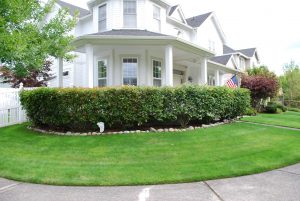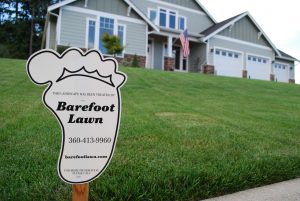
Fertilizer application rates are determined by the actual Nitrogen applied rather than the total amount of fertilizer product. A bag of fertilizer will have a three number designation called analysis or grade. The three numbers represent the primary nutrients Nitrogen-Phosphorus-Potassium (N-P-K). These numbers refer to the content of the bag of fertilizer in terms of percentage by weight. Here is an example:
A bag of 20-10-10 fertilizer contains 20% Nitrogen, 10% Phosphorus, and 10% Potassium. The remaining 60% is known as the carrier. The carrier often contains valuable nutrients such as Sulfur or Calcium. If the analysis has four numbers, the last number is Sulfur (N-P-K-S).
Fertilizer applications are measured by actual Nitrogen per 1000 sq. feet. If we have a 50lb bag of (20-10-10) fertilizer, we can multiply the percentage of Nitrogen by the total weight of the fertilizer in the bag. .20 x 50lb =10lbs actual Nitrogen per 50lb bag.
If we want to apply 1lb of actual Nitrogen per 1000 sq. ft here is the formula:
1lb Nitrogen per 1000 sq. ft.
________________________ = 5 lbs. fertilizer per 1000 sq. ft.
20% Nitrogen in bag
In our example of (20-10-10)
1/.20=5lbs fertilizer per 1000 sq. ft.



